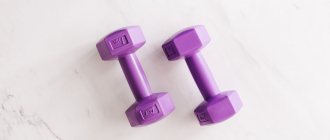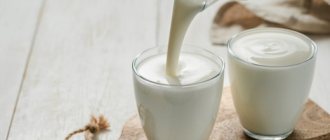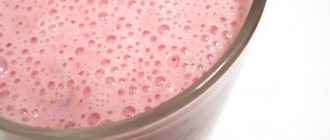Should I take protein and why is it needed? The benefits and harms of protein
What does protein provide and what is it for?
Protein is the most popular type of sports nutrition today, which is a dry protein - usually milk, egg or vegetable, consisting in turn of many amino acids (20, to be precise), involved in all vital processes of our body. What are the benefits and harms of protein? When answering the question whether it is worth drinking protein and how it is useful, first of all we need to say that all our cells are made of protein and almost everything in our body needs protein - muscles, ligaments, skin, hair, nails, blood vessels, bones, nervous and immune systems, hormones, enzymes, etc. are built from protein. Add here such important properties as building muscle mass, satisfying hunger and suppressing appetite, as well as increasing strength, endurance and performance.
Is protein harmful?
Protein is the same protein that we eat every day - eggs, cottage cheese, meat, nuts, legumes - all these are protein-rich foods. But protein is specially prepared, sometimes fermented, dried and packaged in bags or jars of protein, without excess fats and carbohydrates. Based on the results of many studies, experts have concluded that taking protein does not cause negative consequences if all the rules for using the product are followed and the recommended daily allowances are not violated. In rare cases, allergic reactions and individual intolerance may occur, that is, everything that can be caused by any food product.
Why do you need to drink protein?
Of course, protein is primarily necessary for people who lead an active lifestyle and adhere to a specific nutrition plan in order to control weight, lose weight, gain weight, increase endurance and strength. As we said above, protein helps accelerate the growth of muscle mass - because protein is the main material for building muscles, and also to lose weight - by consuming protein, it is much easier to control your appetite and not indulge in high-calorie junk foods, and also improve your appearance (all in the body consists of protein - skin, nails, hair - too) and the overall result of playing sports.
Do people who don't exercise need protein?
Should you consume protein if you are not doing intense physical activity? The answer is “yes” if you have an unbalanced diet and do not eat enough protein foods. The average moderately active person needs 1.5 grams of protein per 1 kg of weight per day. That is, if you weigh 60 kg, then your body needs to consume 90 grams of protein. Do you get this amount of protein from regular foods? If yes, then you do not need protein supplements; if not, then either increase the amount of protein-containing foods in your diet, or include protein or amino acid complexes in your diet. Protein shakes are often used as a protein snack to “complement” the required protein intake.
Why do I need protein if I eat 10 scrambled eggs for breakfast and pork knuckle for dinner - you ask?
With such a diet, you are probably doing well with protein, as well as with the amount of fat. With such a diet, excess weight gain, problems with blood vessels, digestion, and other delights of eating fatty and high-calorie protein foods are not far off. The big advantage of ready-made protein mixtures is that they are practically devoid of fats and carbohydrates, and by consuming protein in the form of a cocktail, it is much easier to adhere to your protein intake and “cut off” excess fats and carbohydrates that the body does not need.
What happens if you drink in excess of your dose?
Well, we discussed whether it is possible to drink a protein shake without training and came to the conclusion that, in principle, if you drink it in moderation, there will be no harm. But what happens if you regularly exceed the norm? Nothing good! Yes, for the first couple of weeks, you may just, excuse me, go to the toilet more often. Then the problems will begin.
- The processes of protein decay in the intestines are controlled by special microorganisms. This releases toxic substances that, along with the blood, enter the liver and kidneys. As a result, these organs experience extreme stress;
- It will be difficult for the body to process and remove large amounts of protein, so some of it will settle, forming accumulated putrefactive masses. Sooner or later this will lead to a pathological intestinal disorder;
- The nervous system will also suffer from the toxic effects of breakdown products. This will manifest itself differently for each person: depression, fatigue, lack of mood, irritability;
- Immunity will also take a hit.
As you can see, the human body constantly needs protein. Therefore, you can drink it additionally as a supplement, even without training. But it’s important to calculate the norm, which depends on a person’s lifestyle, his height, weight, gender and even health status. Excess is no less dangerous than deficiency.
What is protein made from and what types does it come in? Types of protein and content in products
How to choose quality protein? First, you need to know what products contain protein (to understand what protein is made from), and also understand what types of protein are currently on the market and what their differences are.
For your convenience, we have collected the main types of proteins from best to worst, as fundamental factors, choosing the amino acid profile, time and degree of absorption, taste and biological value.
Why is the amino acid profile important and what is it?
The answer is quite simple: if you consume protein in which the composition of amino acids is not balanced, then the negative consequences will be a disruption of protein synthesis in your body. Protein metabolism is disrupted and, as a result, the processes of breakdown begin to prevail over the processes of creation. This affects not only muscles, but also general metabolic processes.
It is extremely important that the protein not only contains all the necessary amino acids, but also maintains a certain ratio of amino acids. What is the biological value of protein?
The biological value of protein is an indicator that reflects how well protein is processed in our body, how it is absorbed and further utilized. If the composition of the protein is close to the proteins in our body, then its amino acid profile is well balanced and perfectly absorbed. Thus, high-quality proteins contain at least 30% essential amino acids. This category includes animal proteins: meat, dairy products, eggs, fish. Proteins with lower biological value are legumes, cereals, buckwheat, and nuts. Ideally, combine proteins with high and low biological value to obtain a balanced amino acid composition.
| TYPE OF PROTEIN | AMINO ACID PROFILE | LISTENING TIME | TASTE | ADVANTAGES | % ABILITATION | BIOLOGICAL VALUE |
| Whey : isolate | balanced, all amino acids present | 1.5-2 hours | nice | quickly absorbed, mixes well with other components, balanced amino acid profile | 95% | 100 |
| concentrate | 1.5-2 hours | nice | ||||
| hydrolyzate | 10 minutes-1 hour | bitter | ||||
| Egg | balanced, considered the most suitable for the human body | 3-4 hours | Specific, “egg” | high bioavailability, good amino acid profile, suitable for those intolerant to milk protein or lactose | 97% | 100 |
| Casein micellar calcium caseinate sodium caseinate | balanced | up to 6-8 hours | Thick, specific | The amino acid profile is good, indispensable during the “drying” period, as well as for weight loss, long, but well absorbed | 80% | 80-90 |
| Vegetable: pea | balanced | is slowly absorbed | Specific, “pea” | suitable for vegetarians, easy to digest | 80% | 65 |
| soy | defective | is slowly absorbed | neutral | 60-80% | 74 | |
| hemp | balanced | average absorption rate | Specific, “herbal” | 75% | 70 | |
| Beef | balanced | 2-3 hours | unpleasant taste characteristics | Good amino acid profile, suitable for those who are lactose intolerant | 95% | 75 |
In addition to the types of protein listed in the table, which are the most common, it should be said about some other existing types that have become increasingly common on the protein products market:
- wheat
- rice
- from pumpkin seeds
- brown rice
- from sunflower seeds
- from chia seeds
- peanut
- fish
Plant protein has gained popularity among vegetarians, as well as those who are intolerant to lactose and animal protein.
What (which foods) contain protein, that is, protein? We collected all the necessary information in a table:
| THE PRODUCT'S NAME | CONTENT PER 100 GRAMS (G) |
| Soybeans | 35 |
| Chicken breast | 29 |
| Beef meat | 28 |
| Mutton | 25 |
| Lentils | 25 |
| Cashew | 25 |
| Pumpkin seeds | 25 |
| Turkey | 23 |
| Tuna | 23 |
| Sunflower seeds | 23 |
| Cheese | 23 |
| Shrimps | 23 |
| red fish | 22 |
| Beans | 22 |
| Peas | 21 |
| Cod | 21 |
| Mash | 21 |
| Veal | 19 |
| Almond | 19 |
| Beef liver | 18 |
| Cottage cheese | 18 |
| Hazelnut | 16 |
| Brazilian nut | 14 |
| Walnut | 14 |
| Quinoa | 14 |
| Buckwheat | 13 |
| Eggs | 13 |
| Cocoa | 12 |
| Oat groats | 12 |
| Millet | 12 |
| Tofu | 10 |
| Greek yogurt | 10 |
| Milk | 5 |
BZHU during the drying period
On the day of training, carbohydrates should be present in the athlete's diet. But these, as already mentioned, must be complex carbohydrates. Complex (also called complex) carbohydrates are black bread, cereals, pasta and fruits and vegetables. Sweets (i.e., simple carbohydrates) can be consumed by ectomorphic athletes, but in small quantities, and in no case should they be consumed before training. After training, eating sweet foods is acceptable - insofar as during this period the body needs glucose. The second meal after training should consist of complex carbohydrates with a small amount of protein.
Let's calculate the required amount of carbohydrates, proteins and fats. For example, let's assume that your body weight is 85 kg.
Proteins – 2 g per 1 kg of body weight (85 x 2 = 170 g). It is advisable to consume proteins throughout the day in equal portions of about 30 g, but if there is more in some portion, it’s okay: proteins take quite a long time to digest.
Carbohydrates – from 2 to 7 g per 1 kg of body weight for normal nutrition, when cutting we reduce it to a minimum – 2 g (85 x 2 = 170 g)
Fats – they are definitely needed, the golden rule is 0.5 g per 1 kg of body (85 x 0.5 = 42.5 g of fat per day)
Calories are secondary
Carbohydrates – 4 Kcal/g
Proteins – 4 Kcal/g
Fats – 9 Kcal/g
Example: for our diet, the number of calories (we take carbohydrates to the maximum) is as follows: 170*4+170*4+42.5*9 = 1742.5 Kcal
Menu for the day when drying
Below is an approximate basic menu for a man 80-85 kg: 8.00 – Chicken – 100 g (turkey, beef, veal), porridge – 100 g (buckwheat, rice, pasta, oatmeal, pearl barley) 10.00 – Cottage cheese 0-4% – 400 12.00 – Apples 300 g 14.00 – the same as at 8.00 16.00 – Cottage cheese 400 g 18.00 – Chicken 150 g, vegetables – 300 g 20.00 – Egg white omelette 300 g (whites only, discard yolks) 22.00 – Cottage cheese (or protein)
Rice – approximately 200 g complex carbohydrates per 250 g rice
Buckwheat – approximately 200 g of complex carbohydrates per 300 g of buckwheat
In any case, on a day free from training, the athlete’s menu should consist half of carbohydrate foods, with a small dose (no more than 1/3) of simple carbohydrates.
Food consumed before training (1.5 - 2 hours before it) should consist of natural proteins (cottage cheese, meat, eggs) and complex carbohydrates. What more is an individual matter. It is better for an endomorph to prefer food with a predominance of protein, and for his slender colleagues - with a predominance of carbohydrates.
Which protein should you choose? Which one is better for gaining weight and which one is better for losing weight?
Which protein is best to choose for gaining muscle mass?
or for weight loss? It is very important for us that you understand that there is no separate protein for muscle growth and a separate protein for weight loss - in essence, all proteins are universal. At the same time, depending on the goal, we can recommend those types of proteins that, according to their characteristics, will be of higher priority.
If we are talking about what kind of protein to take to gain weight, the most popular are whey and egg, as they have a balanced amino acid profile and good digestibility. That is, with them you will achieve your goal many times faster and more efficiently.
What protein is best to drink for weight loss?
In this case, both complex multiproteins and whey protein are suitable, however, first of all, you should choose casein, which, due to its slow absorption, suppresses the feeling of hunger for a long time. As a result, the number of calories consumed is reduced, appetite is dulled, weight loss occurs, and, importantly, not due to muscle loss, but due to the loss of the fatty component of our body.
How to build a training cycle?
Cardio training and proper nutrition will help you get a flat tummy.
To obtain relief, a woman should engage in moderate athleticism and serious aerobics. At the same time, aerobic training should not take place to the point of exhaustion. Many women who want to make their body more prominent are overly involved in aerobics. This leads to an unevenly developed body or excessive weight loss.
This happens because there is very little muscle mass in the female body, and an order of magnitude more fat. Strength work in the right mode with appropriate rest and nutrition promotes muscle growth. Aerobics does not promote muscle development, but it stimulates the processes responsible for the breakdown of fat.
A large volume of strength training helps to break down fat, but does not lose muscle. With aerobics, the situation is exactly the opposite. Excessive aerobic exercise is harmful to the body and, accordingly, to the muscles. They inhibit anabolism and suppress the functions responsible for the breakdown of fat cells. The consequence is chronic fatigue and obesity.
The correct workout for a girl during the period of muscle drying is a set of exercises for the whole body plus a little aerobics. The number of sets (approaches) for each exercise is 5-6; number of repetitions: for the lower body – 15-20, for the upper body – 12-15.
For each exercise you need to use a weight with which you can perform 2 more repetitions. But only the last set should be rejected. The interval between sets is a minute - one and a half. This method allows maximum use of muscle fibers and stimulates the processes of anabolism (muscle growth).
Girls who want to get rid of a large layer of fat will receive great benefits if they slightly modify the complex. To do this, you just need to do each exercise without a break. The complex is performed without a break between exercises, one approach at a time, 4 – 5 “circles” per workout. After such a workout, no aerobics is needed. It's better to do it the next day.
For women who want to dry out their muscles, a regular “pumping” training coupled with aerobics is enough. Aerobic training should be started only after a 10-minute rest from strength work.
Aerobic training should be moderate, but not too light. Set the elliptical to a mode in which you can exercise for 15 minutes. But do it for 10 minutes. 3 sets of 10 minutes on the elliptical machine after strength training is all you need.
Such training - a complex for the whole body along with running on an ellipsoid (you can do it on a “track” or on a bicycle ergometer) - should be carried out 3 times a week. On “weekend” days, you don’t need to exhaust yourself by fasting and long walking. Such extremes are just as harmful as extreme aerobic exercise.
Any girl can become 15 kilograms heavier due to high-quality muscle mass, and at the same time maintain a feminine shape. It is almost impossible for a woman to become even more muscular and stronger without special medications. Many women, regardless of their inclinations and body types, have achieved success in bodybuilding simply by following the recommendations outlined above.
Which protein to choose for women and which for men?
Which protein is better for women and which is better for men?
There are no individual proteins that differ by gender. Therefore, answering the question of which protein would be better for girls, then, as for men, the best would be whey, milk (casein) or egg protein, since these types of protein are more balanced in amino acid profile, digestibility and biological value. But such a division - into men and women - occurs when we are faced with restrictions for one reason or another. For example, we often encounter taboos on dairy products and lactose among a predominantly female audience - cosmetologists and nutritionists are increasingly limiting the consumption of dairy products due to allergies, intolerances and negative effects on the condition of the skin and the digestive process. If we are talking, for example, about plant proteins, in particular about soy protein, then in its composition you can find phytoestrogens - substances similar to the female hormones estrogens. Thus, we do not recommend this type of protein to the male half of humanity.
So, for women who limit their consumption of dairy products, as well as vegetarians, we recommend plant protein - ideally a mixture of pea and hemp. This mixture has a balanced amino acid profile, rich in arginine and glutamine. If a woman has no problems digesting dairy products or animal protein, then whey, egg or casein protein is suitable.
For men with intolerance to dairy products, egg or animal protein, such as beef, can be recommended. If you are on a vegetarian diet, fasting, or have an intolerance to animal protein, it is also better to use plant mixtures rather than pure types of plant protein.
In addition, the division into female and male proteins takes place if the product is additionally enriched with predominantly “female” or “male” vitamins or, for example, fiber. Often on the market you can find protein shakes for women, enriched with prebiotics for digestion, or certain vitamins, the intake of which is especially important for women's health.
Is sports nutrition effective for weight loss?
Sports nutrition that helps with weight loss is developed through the joint efforts of nutritionists and professional trainers. All properties of food additives are analyzed, sports literature is studied, reviews of consumers who have used the protein in practice. In some cases, in addition to proteins, you will need to include in the diet other additives that have the ability to mutually enhance and complement each other.
Important! Not a single product presented in the “sports nutrition” category can be regarded as doping and there are no prohibited components in its composition. These complexes are intended for overweight people whose fat fold thickness exceeds 3 cm
You need to measure at the level of the umbilical cavity, pulling the fold to the side. In addition to men, representatives of the fairer sex can also take protein. However, trainees should not have chronic diseases of the liver, gastrointestinal tract, heart and blood vessels
These complexes are intended for overweight people whose fat fold thickness exceeds 3 cm. You need to measure at the level of the umbilical cavity, pulling the fold to the side. In addition to men, representatives of the fairer sex can also take protein. However, trainees should not have chronic diseases of the liver, gastrointestinal tract, heart and blood vessels.
The performance of protein complexes has been repeatedly confirmed by scientific research. According to their results, significant weight loss was achieved in 90% of the total cases if taken regularly. And these are very good results, despite the fact that side effects from increased protein intake were observed in only 2% of those losing weight. Which proves the almost absolute safety of the protein/training/diet complex.
Unfortunately, the cost of one package of protein powder is quite high, so many scammers profit from those losing weight by offering shakes below the market price, but absolutely ineffective. It is advisable to purchase the drug in trusted and certified stores that provide a quality certificate for each unit of product.
How to take protein for weight gain and weight loss
How to take protein to get results? Remember: protein is protein, so you need to consume it taking into account your overall diet containing protein foods, not forgetting the recommended dosages.
How to properly consume protein? You can take up to 3 servings of protein per day, that is, 60-70 grams of the product. It is advisable to get the rest from regular products.
When is the best time and how to drink protein to gain weight? The diagram looks like this:
- an hour before training
- within an hour after training
- as a snack between main meals
You should also add intense sports, mainly strength training, and create a calorie surplus in your diet.
How to drink protein for weight loss? The scheme is as follows:
- you can drink protein at night an hour before bed
- also within an hour after training and an hour before it
- replace one of your meals
- as a snack if you feel hungry
How to properly dilute protein? Boiling water should not be used to avoid protein denaturation. Otherwise, to prepare a protein shake, you can use water, juices, milk, preferably at room temperature. But for weight loss, it is better to dilute the protein in water or skim milk, taking into account the total calorie content of the drink.
Is it possible to build muscle without drinking protein shakes?
Quite! “For muscle growth, the most important thing is regular and proper training and natural nutrition,” comments Anna Korobkina. - The average amateur is able to achieve good results without protein and other supplements. If there is no progress, look for the reason, first of all, in the training itself, nutrition or rest.”
If you exercise regularly, eat a balanced diet and use protein shakes wisely, this will not cause much harm. “By creating a competent nutrition program (including protein consumption), you can achieve better results. Provided that this program will exactly correspond to the goals of the training stage at which it is applied, and take into account your physiological characteristics. The main task is to ensure consistency between training, diet and physiology,” adds Anna Korobkina.
Not working out and just drinking sports shakes? This will not affect muscle growth in any way. “Protein without proper loads does not affect muscle growth; their volume and strength depend on training and nutrition,” reminds Yesenia Kalyuzhina.
How much protein should you drink per day and duration of intake?
How many grams of protein can and should you drink per day? As we said above, the amount of protein that can be taken daily is up to 3 servings per day, depending on your diet, because we get the rest of the protein from food. Let us remember that one serving is usually 30-40 grams of product, which usually contains from 18 to 24 grams of protein. The higher the protein content in the product, the better.
It is necessary to monitor the amount of calories consumed as well as protein in order to calculate the missing amount of protein.
How much protein can you drink:
- with intense loads - 2-2.5 grams per kilogram of weight
- with moderate training or no sports activity - 1.5 grams per kilogram of weight
Based on this formula and knowing your diet, you can independently calculate the portion of protein needed for you personally.
Protein during pregnancy and breastfeeding - is it possible or not?
Is it possible to drink protein during pregnancy and breastfeeding? Yes, you can. At the same time, there is often an opinion that use is not recommended for women during pregnancy, as well as during lactation. Why? Because sports nutrition manufacturers do not conduct extensive research into the effects of protein on pregnant women, because they are simply not the main target group of the final product.
Protein is a protein, and it is a safe product, the only thing we recommend is:
- choose proteins with a minimum amount of flavoring additives to avoid possible allergic reactions
- introduce protein into your diet gradually so that your body gets used to the product and you can evaluate its effect on your body, avoid gastrointestinal upset, individual intolerance and other possible side effects on the body.
Side effects of sports supplements
Sports nutrition should be balanced and dosed. Only in this case will taking supplements be safe for health. For example, excessive protein consumption can not only lead to kidney failure if you have kidney problems, but also reduce bone density, which can lead to osteoporosis. But the consumption of milk protein and gainer, even in small doses, can lead to intestinal disorders and allergies, but only if lactose intolerance is diagnosed.
As for creatine, today there are no studies that would confirm its absolute safety. Harvard Medical School believes that this substance will not help build muscle mass in adulthood. Therefore, it is better to use it at an older age to maintain built-up muscles.
Contraindications to all sports supplements do not exclude individual intolerance to the components. This rule applies to food, medicine and even household products. If the supplement contains at least one component that the body does not like, then you can get not only nausea and vomiting, but also an upset stomach.
Physician, endocrinologist and physiotherapist at the ON Clinic Kharkov Sports Palace medical center Natalya Shchukina notes:
“Sports supplements are an unregulated category of products, meaning they are sold without restrictions and in large quantities to improve athletic performance. According to the Academy of Sports Medicine, their use, although a personal choice, is controversial from a medical point of view. Therefore, in each specific case, consultation with the attending physician will not be superfluous.”
Can children eat protein?
Can children eat protein? The situation here is the same as with pregnant women: there have been no large-scale studies or tests of the benefits or harm of protein in children. For our part, we can say that children can be given small amounts of protein in the form of snacks or bars, and also added to dairy products to replenish the amount of protein the child needs. Moreover, every parent knows how difficult it is to get a child to get protein from food through meat, fish and other protein-containing foods.
At what age can a child drink protein? From birth, protein is included in the baby's diet. If we are talking about protein powder in the form of supplements or protein snacks, we recommend including them in the diet in small portions no earlier than when the child reaches 3-4 years of age. A child’s protein requirement changes with age and looks like this:
- 3-7 years, no more than 3-3.5 grams of protein per kg of body weight, while the child can receive 1/3 of the protein from protein supplements
- 8-14 years old, no more than 2.5-3 grams per kg of body weight, a child can receive 1/3 of protein from protein supplements
- from 14 years old, 1.5-2 grams per kg of body weight, a child can receive 1/3 of protein from protein supplements
Accordingly, you can replace 1/3 of this protein with protein, focusing on the weight and age of the child.
Protein: instructions for use
Body drying protein for girls and boys should be used strictly according to the instructions and in compliance with all recommendations. It is necessary to distribute the daily protein intake in equal quantities, which will be used after the same period of time. This way you can provide your body with proper nutrition throughout the day.
To prepare a cocktail, you need to dilute one hundred and fifty grams of powder with three hundred grams of water, juice or milk, mix well until a homogeneous consistency is obtained (you can use a blender). Then the cocktail is cooled and drunk through a straw in small sips.
As mentioned above, you need to use only half of your daily protein intake as a shake. The body should get the rest of the protein from the following foods:
- Any legumes;
- Egg whites;
- Lean fish and meat.
It is also necessary to adhere to the correct sleep and wakefulness regime; it is recommended to eat small portions up to six times a day. Before lunch, it is best to eat foods rich in protein, and it is recommended to drink cocktails in the afternoon.
But experts and experienced athletes recommend drinking the first cocktail in the morning, when the body experiences a nutritional deficiency. Many argue that a whey shake is the best choice in this case, as it is quickly absorbed and has a good amino acid composition. Drinking a portion of the cocktail in the morning helps stop the catabolic process.
Protein should also be consumed before and after workouts to preserve muscles. Before going to bed, you should also drink a cocktail so that muscle mass is nourished during sleep.
advertising is not displayed
Is it possible to drink protein without training?
Can you drink protein if you don't exercise? Drinking protein without training is okay if your diet doesn't contain enough protein. In this case, we focus on the protein dosages recommended in the absence of physical activity - 1.5 g per 1 kg of weight.
What negative consequences can arise from protein deficiency in the body? are possible :
- fragility, brittleness of nails
- muscle weakness
- lack of muscle mass
- hair loss, dry hair
- overeating, sugar cravings
- swelling
- weak immunity
- migraines, headaches
- insomnia
- mood swings
In order to prevent the occurrence of such symptoms, you should carefully monitor the amount and quality of protein consumed in your diet.
Which is better: protein or gainer?
Gainer or protein: which is better for gaining muscle mass? To answer this question, you should remember what body types exist:
- ectomorphs: very slender, rather lean people, with a low level of subcutaneous fat, long, thin arms and legs. This type of person has a high metabolism and endurance.
- mesomorphs: characterized by an average level of subcutaneous fat and metabolism, easily tolerate serious sports loads
- endomorphs: people who are heavily built, stocky, have a low metabolic rate, and also tend to gain weight
Based on this, when choosing between a gainer and a protein, you should be guided by the fact that protein for weight gain is recommended for those who gain weight well in principle, that is, endomorphs and mesomorphs. A gainer should be chosen by those who have difficulty gaining weight, that is, ectomorphs.
Read more about what a gainer is and which one is better to choose here.
The need for proper nutrition
The consistency of the protein resembles a white powder. Some manufacturers saturate it with color, flavor and aroma fillers. Of course, it is comfortable for the body, but you don’t need to eat exclusively protein.
Natural food is always different from supplements. It is rich in substances not found in food supplements, particularly protein. The human body needs an influx of ordinary food, which is a supplier of all the necessary substances in addition to protein.
Some people follow a low-fat diet. This way you can quickly lose weight or maintain weight, but such food cannot be called tasty. There are also dishes containing large amounts of protein (for example, fish or meat), but they contain so many calories that they are not suitable for those losing weight. Therefore, those who play sports tend to replace it with regular protein.
Taking protein does not always lead to weight loss. Some physical activity is also required
Only those with accelerated metabolic processes can lose weight solely through protein intake. Everyone else needs physical activity. Muscles spend more energy than others. That is, the more there are, the more intensely fat is burned.











